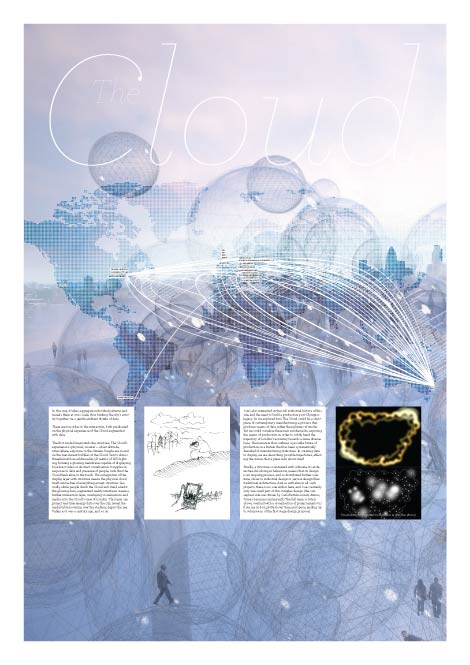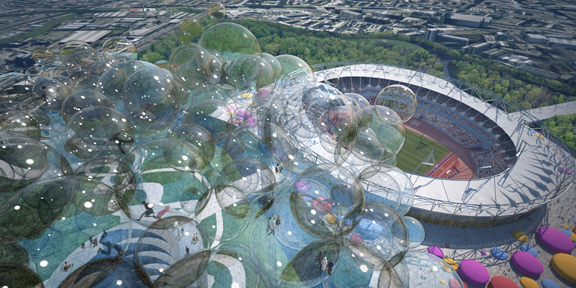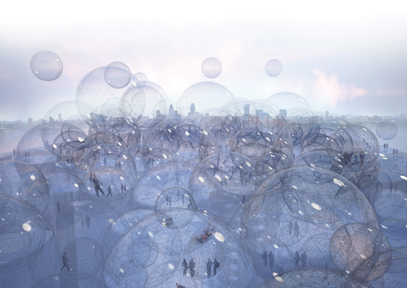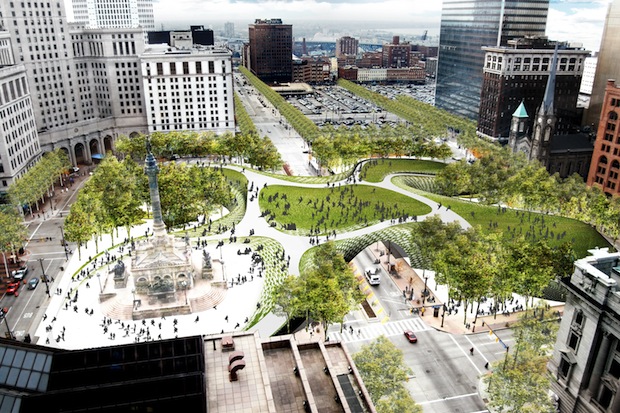 {"The Thread" illustration. A fluidity of paths and hills.}
{"The Thread" illustration. A fluidity of paths and hills.}
Cleveland, once dubbed the "mistake on the lake" is considering a major landscape architectural development. Currently divided in a peculiar four-square arrangement, three new proposals re-image Cleveland's Public Square into a united green space design.
James Corner, of Field Operations and High Line Park fame have worked directly with two nonprofit organizations, Parkworks and the Downtown Cleveland Alliance. Corner offers three radically different designs to the square. Deemed, The Frame, The Forest, and The Thread, the concepts address traffic and circulation matters to different extremes, while all providing elements of urban park goodiness.
The injection of the park into Cleveland seems a bit lofty goal, and it is. A city hit as hard as any by economic woes seems an unlikely candidate for a shoot for the stars type concept. But that was Corner's intention. Designing to a current city park budget will inevitably create mediocrity, so why not aim high, and worry about the money later.
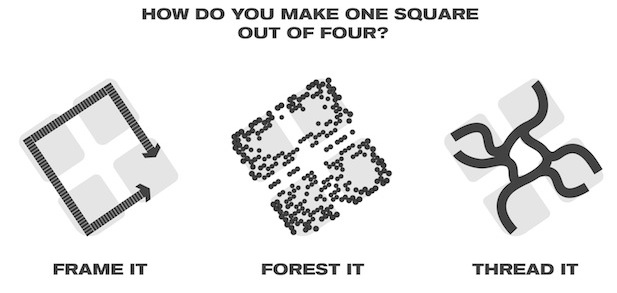 {Three concept diagrams.}
{Three concept diagrams.}
I kind of love this approach of finding finance when pockets tighten, excite people and developers about the project, the money will maybe come with them. It seems that a general excitement is being generated around the idea, and those in power are realizing the social and eventual benefits of landscape architecture.
My favorite, and it seems the majority of interest is forming around the organic hill structure, or The Thread, a 70-foot-high manmade hill that would link all four quadrants of the square and separate pedestrians above from cars and buses below on Superior Avenue and Ontario Street. This is clearly the more iconic choice, and holds the greatest potential for spatial interest. It could be interesting to see at least a partial combination of the hill and forest concept.

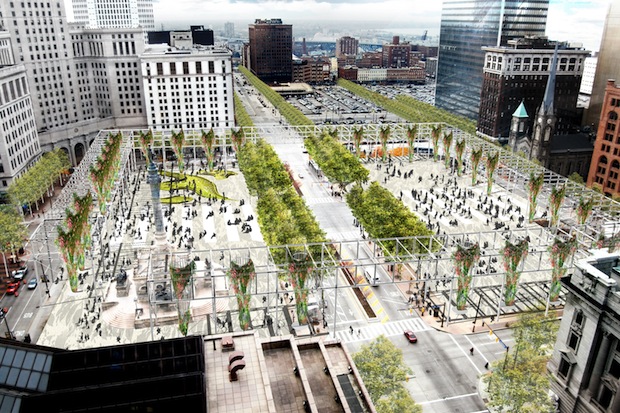 {"The Frame" 3D and illustrative rendering.}
{"The Frame" 3D and illustrative rendering.}
Will it ever get built in the near future? It's hard to say, but seems Cleveland officials acknowledge the impact that Corner's High Line has had, and looking for ways to make it work. As an Ohio native, I'd love to see its fruition, and hopefully keep stirring the fire in Urban Park Development. Now, if we can only do something about the Great Park?

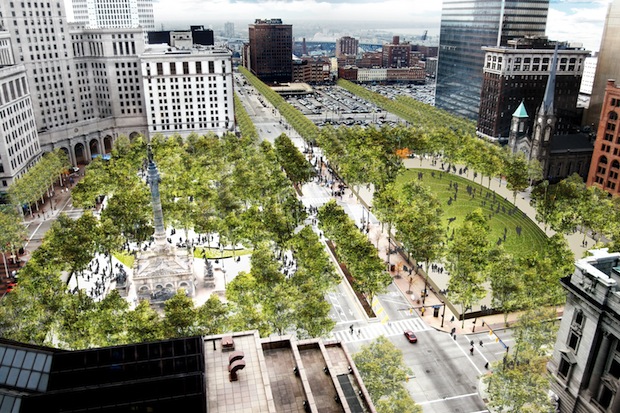 {"The Forest" 3D concept and illustration.}Story was found here.
{"The Forest" 3D concept and illustration.}Story was found here.







